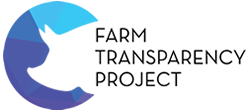News & Media > Media Releases and Statements > Animal advocacy groups target dairy 'factory farms' in new campaign
Animal advocacy groups target dairy 'factory farms' in new campaign
- A new campaign uses a combination of drone, handheld and hidden camera footage to document the conditions inside four intensive dairy farms across Australia.
- The new footage shows cows living in excrement-covered concrete in zero-graze 'freestall' sheds, where cows have no access to the outdoors for the majority of their lives.
- Campaigners are calling on the public to boycott dairy products to protest the rise of US-style dairy factory farms, which are becoming more common in Australia.
US-style 'zero-graze' dairy factory farming has come under fire in a new campaign from animal protection organisation Farm Transparency Project (FTP).
The organisation has released footage from four intensive dairy factory farms in Victoria and NSW, which confine cows to metal and concrete sheds for the majority of their lives.
The farms featured in the campaign are Calmo Farms and Vinnicombe Dairy, both in Calivil, Victoria, and two properties operated by Australian Fresh Milk Holdings, Moxey Dairy in Gooloogong, NSW and Coomboona Farms in Coomboona, Victoria.
The campaign includes drone footage from all properties, handheld footage taken by activists inside Calmo and Vinnicombe Farms and footage from hidden cameras installed inside the sheds at Vinnicombe Farms, which captured the separation of newborn calves from their mothers.
Vinnicombe is a supplier to Noumi Limited (formerly Freedom Foods) which is behind popular brands including MilkLab, Australia's Own, So Natural, and Vitalife. In 2017, the farm was awarded as the Weekly Times Coles Dairy Farmer of the Year.
Farm Transparency Project spokesperson, Harley McDonald-Eckersall, says that most people aren't aware that dairy factory farming is happening in Australia, let alone that "the Australian dairy industry is actively promoting it."
"Australian dairy is a highly effective propoganda machine," she says. "It wants people to feel good about the milk they drink so it feeds them images of happy cows freely grazing in lush, green paddocks. These farms have 700-900 cows per shed, packed in on hard, concrete floors with only a small sand bed to provide any kind of relief or rest. Cows are gentle, intelligent and inquisitive animals. To take away their freedom in this way is completely against even the most basic rights that most people in Australia believe are deserved by all sentient beings.
"We only have to look to the United States, from where many of these farms draw their inspiration, to see that, as our population continues to grow, dairy factory farming is only going to become more common. That is unless we collectively put our foot down now and say that this is not something we want in this country."
In 2024, the Australian dairy industry became the first in the world to release a comprehensive national set of guidelines for the intensive confinement of dairy cows in response to ‘a growing number of farms (that) have transitioned to contained housing facilities with zero grazing.’ These guidelines support and encourage the adoption of these ‘contained’ housing systems, where cows are kept in large, concrete barns with access to individual ‘loafing stalls’ where cows can lie on beds of sand or recycled waste.
While the Australian dairy industry has been traditionally pasture based, with cows roaming and grazing in paddocks with access to both grass and supplementary food, such as hay, this model is not the only one in use around the world. In America, for instance, most large-scale dairy farms house cows in indoor, intensive confinement ‘feeding systems,’ where cows have no access to the outdoors for all or part of the year. These dairy concentrated animal feeding operations (CAFOs) are utilised to reduce the amount of energy cows expend through grazing and walking, in order to maximise milk production. They also allow farms to more easily breed cows year round, leading to cows having more calves, which allows a farmer to increase their milking herd faster.
Like other forms of factory farming, dairy factories restrict cows from natural behaviour, such as grazing on grass and having access to open spaces to play and socialise. Instead, cows spend the majority of their lives standing on hard concrete eating grain, or being milked in an industrial milking parlour where their milk production is closely monitored and evaluated. When it begins to slow, and the cow becomes less profitable to the farm, they are sent to the slaughterhouse. On intensive farms such as these, cows are often only 3 years old when they are killed.
Additionally, cows who are fed exclusively on grain, rather than grass, suffer from a range of health issues, including liver abscesses and grain poisoning (acidosis). The digestive systems of cows are incredibly complex and made specifically for breaking down tough, fibrous plant matter. A diet of grain, combined with decreased movement and activity leads to serious health issues and decreased quality of life. In essence, raising a cow in a dairy barn on a grain only diet is the equivalent of feeding a human fast food every day, and banning them from exercising.
These factories exist to maximise the productivity of a dairy farm, by increasing the amount of milk a cow will produce across her life and allowing dairy farmers to utilise their paddocks to grow crops, rather than graze cows. Within intensive systems such as these, there is little room for the wellbeing of cows, who are already exploited within traditional, pasture based dairy farming and whose suffering is only amplified by increased confinement and maximised milk production.
< Return to latest media releases
Sign up to receive media releases by email

 View as a PDF
View as a PDF
